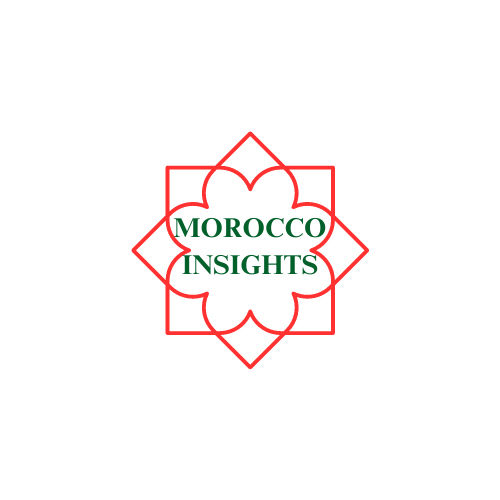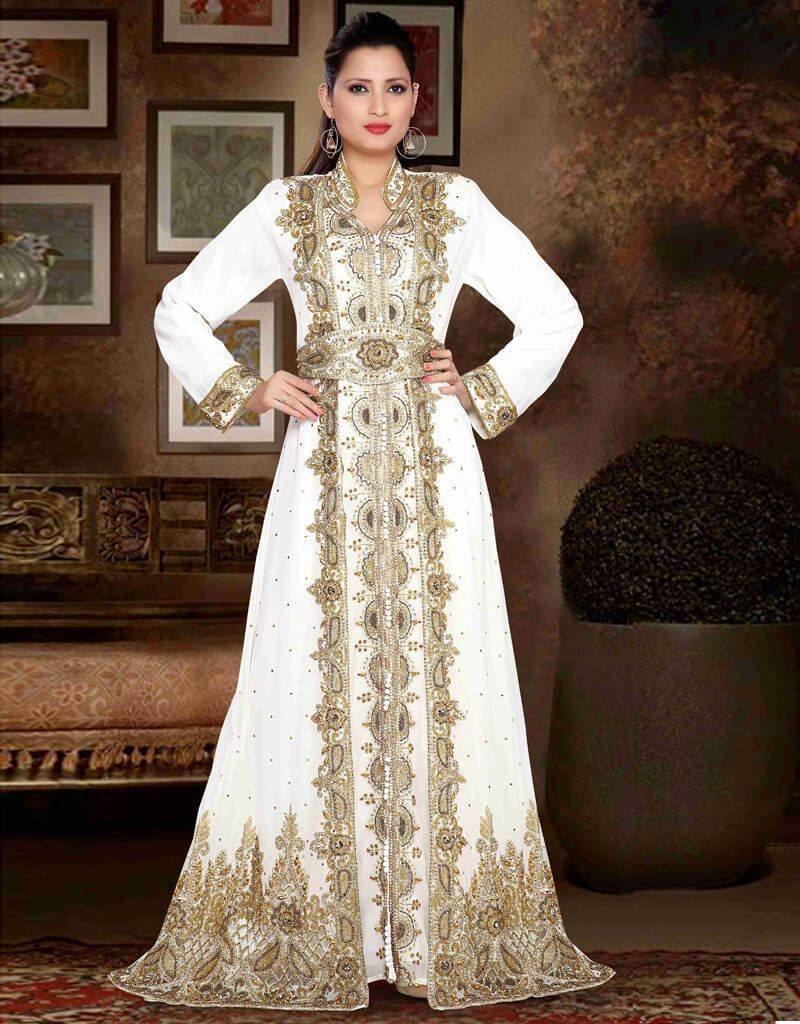Moroccan fashion, a vibrant tapestry of color, tradition, and modernity, is a testament to the country’s rich cultural heritage and its dynamic presence on the global stage. From the intricate embroidery of the traditional caftan to the bold designs of contemporary streetwear, Moroccan fashion seamlessly blends centuries-old techniques with contemporary trends. This unique fusion is expertly crafted by Moroccan designers who marry the past and present, creating pieces that have a global impact. By promoting sustainable and ethical fashion practices, Moroccan fashion showcases the country’s commitment to craftsmanship and community. Through fashion events and shows, Moroccan style continues to inspire and influence global fashion trends, making it a symbol of cultural pride and innovation. So, what are the historical origins of the Moroccan caftan?
Historical Origins of the Moroccan Caftan
Moroccan fashion has a long and fascinating history, deeply rooted in the country’s rich cultural heritage. One of the most iconic and significant pieces in Moroccan fashion is the caftan. The caftan, with its flowing silhouette and intricate embellishments, has become synonymous with Moroccan elegance and style. Its origins can be traced back to various historical periods and influences, each contributing to the unique design and symbolism of this traditional garment.
Berber Origins
The roots of the Moroccan caftan can be found in the ancient Berber culture. The Berbers, an indigenous ethnic group in North Africa, have a long history of textile production and garment craftsmanship. It is believed that the caftan, with its loose-fitting design, was originally worn by Berber men and women as a practical and versatile piece of clothing suited for the region’s harsh desert environment. The caftan’s simple yet elegant design allowed for ease of movement and protection from the intense heat, making it a popular choice among the Berber people.
Andalusian Influence
During the medieval period, the Iberian Peninsula, including present-day Spain and Portugal, was under Muslim rule, known as Al-Andalus. The cultural exchange between Al-Andalus and Morocco greatly influenced Moroccan fashion, including the caftan. The caftan’s design began to evolve, incorporating elements such as vibrant colors, intricate embroidery, and luxurious fabrics that reflected the opulence and artistic flair of Al-Andalus. This fusion of Berber and Andalusian aesthetics laid the foundation for the distinctive style and craftsmanship of the Moroccan caftan.
Ottoman Influence
In the 16th century, Morocco came under the rule of the Ottoman Empire, a dominant force in the Mediterranean region. This period brought further influences to Moroccan fashion, including the caftan. Ottoman textiles and embroidery techniques began to influence Moroccan designs, resulting in the incorporation of more intricate patterns and motifs. The caftan became a symbol of wealth and social status, as the Ottoman-inspired embellishments showcased the wearer’s affluence and taste. This period marked a significant transformation in the caftan’s design, elevating it from a practical garment to a status symbol.
Colonial Era Changes
The 19th and 20th centuries saw Morocco come under European colonial rule, first by the French and then by the Spanish. During this time, Moroccan fashion underwent significant changes, including the caftan. European fashion trends began to influence Moroccan designers, leading to the adaptation of Western-style garments and the use of modern fabrics. The caftan, while still a beloved traditional garment, started to incorporate elements of European fashion, such as tailored cuts and sleeker silhouettes. This blend of traditional and modern elements during the colonial era laid the foundation for the evolution of the caftan’s design in the decades to come.
Caftan as Royal Attire
The caftan’s association with royalty and nobility can be traced back to the reign of Sultan Moulay Youssef in the early 20th century. Sultan Moulay Youssef, a visionary leader, established a court tradition where the caftan became the preferred attire for formal occasions. The caftan’s opulent design and luxurious fabrics were seen as a reflection of the country’s prestige and cultural heritage. This royal endorsement further elevated the caftan’s status, solidifying its position as an iconic and prestigious garment within Moroccan society. Even today, the caftan continues to be worn by members of the royal family during important events and celebrations.
Evolution of Caftan Design
Over the years, the design of the Moroccan caftan has undergone various changes and adaptations. From the traditional, loose-fitting silhouette worn by the Berbers to the more tailored and form-fitting styles of the modern era, the caftan has evolved to reflect changing fashion trends. Designers have experimented with different fabrics, colors, and embellishments, infusing the caftan with contemporary elements while staying true to its cultural significance. Today, fashion designers in Morocco continue to push the boundaries of caftan design, combining traditional craftsmanship with innovative techniques to create unique and modern interpretations of this timeless garment.
Caftan in Popular Culture
The caftan’s timeless elegance and cultural significance have made it an enduring symbol of Moroccan fashion and style in popular culture. The caftan has been featured in numerous films, television shows, and fashion magazines, capturing the attention of fashion enthusiasts around the world. Internationally renowned celebrities have been seen wearing caftans on red carpets and at prestigious events, further elevating its global recognition and popularity. The caftan’s presence in popular culture serves as a testament to its enduring appeal and its ability to transcend cultural boundaries.
Revival of Traditional Caftan
In recent years, there has been a renewed interest in celebrating and preserving Morocco’s traditional craftsmanship, including the art of caftan-making. Designers and artisans have embraced the revival of traditional caftans, employing traditional techniques and craftsmanship to create intricate and breathtaking pieces. This resurgence in traditional caftan making reflects a larger movement towards sustainable and ethical fashion practices, highlighting the importance of preserving cultural heritage and supporting local communities. The revival of traditional caftan has not only revitalized the industry but has also been instrumental in preserving Morocco’s unique cultural identity.
Caftan as National Dress
The caftan’s enduring popularity and cultural significance have led to its recognition as the national dress of Morocco. The caftan has become more than just a fashion statement; it is a symbol of Moroccan identity and heritage. From everyday wear to special occasions, the caftan is worn by Moroccans to showcase their cultural pride and traditional values. The annual Caftan Fashion Show, held in Morocco, showcases the latest caftan designs and celebrates the country’s rich fashion heritage. The caftan’s status as the national dress reflects its importance in Moroccan culture and its place as an iconic symbol of Moroccan fashion.
International Recognition
The Moroccan caftan’s allure and influence have not been limited to Morocco alone; it has gained international recognition and appreciation. The intricate designs, vibrant colors, and exquisite craftsmanship of the caftan have made it a sought-after fashion item by fashion lovers and collectors around the world. The caftan has been showcased at international fashion weeks and exhibitions, captivating audiences with its beauty and cultural significance. This global recognition not only showcases the talent and creativity of Moroccan designers but also fosters a deeper appreciation for the country’s rich fashion heritage and artistic traditions.
In conclusion, the historical origins of the Moroccan caftan are deeply intertwined with the country’s cultural heritage and historical influences. From its Berber origins to the influences of Al-Andalus, the Ottoman Empire, and the colonial era, the caftan has evolved into an iconic and prestigious garment symbolizing Moroccan elegance and style. Its design has adapted to reflect changing fashion trends while staying true to its traditional craftsmanship and cultural significance. The caftan’s importance as the national dress of Morocco and its international recognition highlight its enduring appeal and its ability to bridge the gap between tradition and modernity, making it a timeless symbol of Moroccan fashion and cultural pride.

